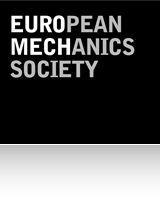571 – Jet Noise Modeling and Control
Date:
28 September 2016 – 30 September 2016
Location:
Ecole Polytechnique, Palaiseau, France
Chairperson:
Prof. Lutz Lesshafft
Laboratoire d'Hydrodynamique (LadHyX)
Ecole Polytechnique
91128 Palaiseau cedex, France
Despite more than six decades of active research, the understanding of turbulent jet noise remains rather incomplete to this day. The description of sound-producing mechanisms continues to generate controversy, as no consistent and encompassing theoretical framework for the definition of aeroacoustic sources has been established yet.
Numerical simulations today provide the capability to reproduce fully turbulent jets together with their radiated sound, but the interpretation of simulation data in terms of conceptual noise-producing flow features remains elusive. However, knowledge of such features is essential for attempts to devise control strategies in order to reduce noise emission.
The reduction of jet noise, as one of the main sources of aircraft noise, presents a major concern for public health and for industrial competition. The environmental impact of jet noise near airports severely affects the quality of life, and even the health of residents. As a result, increasingly stringent noise regulation puts strong constraints on commercial traffic through curfews and slot restrictions. Jet noise reduction therefore remains the focus of large research initiatives; for instance, both the NASA Noise Reduction Program and the Advisory Council for Aeronautics Research and Innovation in Europe (ACARE) have set objectives to reduce the noise levels of future aircraft by 20 decibels within 25 years, with respect to standards of the 1990s.
In spite of the high stakes, no technological breakthrough has been achieved in jet noise reduction since the development of the high-bypass engine, which was based on the theoretical discovery of Lighthill’s 8th power velocity law. Since then, little new understanding has been forthcoming with regard to the basic noise-producing mechanisms in jets, and as a result, novel technical solutions are rare. This point is attested to by the fact that much recent noise abatement research, functioning on an unsatisfactory trial-and-error basis, has been focused on the use of microjets, the original patent for which is held by Geoffrey Lilley and dates from 1961. In this light, the academic aeroacoustics community is faced with the challenge to open new perspectives for noise reduction by elucidating the underlying noise-generating flow dynamics, and to propose flow control strategies based on this knowledge.
A collaborative research project named “Cool Jazz” (an acronym for “Control-oriented linear and nonlinear modeling of jet aeroacousticzz”), addresses the jet noise problem by linking together experiment and theoretical modeling of instability dynamics. The project is led by the authors of this proposal, with funding from the French Agence Nationale de la Recherche over the three years 2013–2015. The core partner institutions are LadHyX,
Pprime and LIMSI in France, and international partners are Anurag Agarwal (Cambridge), Andr´e Cavalieri (ITA Brazil) and Tim Colonius (Caltech).
The Cool Jazz approach is based on the assumption that large-scale structures in jet turbulence have coherence lengths and times much larger than the turbulence scales, and that the dynamics of such structures resemble those of instability waves. The concept of instability wave packets as sound-generating elements in jet turbulence has been popular since the 1970s. Jordan & Colonius1 recently reviewed experimental and numerical evidence for the pertinence of this representation.
The proposed colloquium aims to bring together the jet noise community (principally located in France, UK and USA) for an in-depth discussion of current approaches to turbulent jet noise modeling, and for an assessment of flow control attempts for noise reduction. It will also provide a forum to disseminate the results of the Cool Jazz project, and to promote the sharing of data. All Cool Jazz data will be made publicly available in an open database. Contributions will be invited from researchers who study jet noise in subsonic and supersonic conditions by numerical, experimental or theoretical means. Passive and active control strategies will be presented. Industrial participation will be an important element for the success of the colloquium, as it is stressed that the motivation is to come closer to technology solutions for jet noise reduction.
